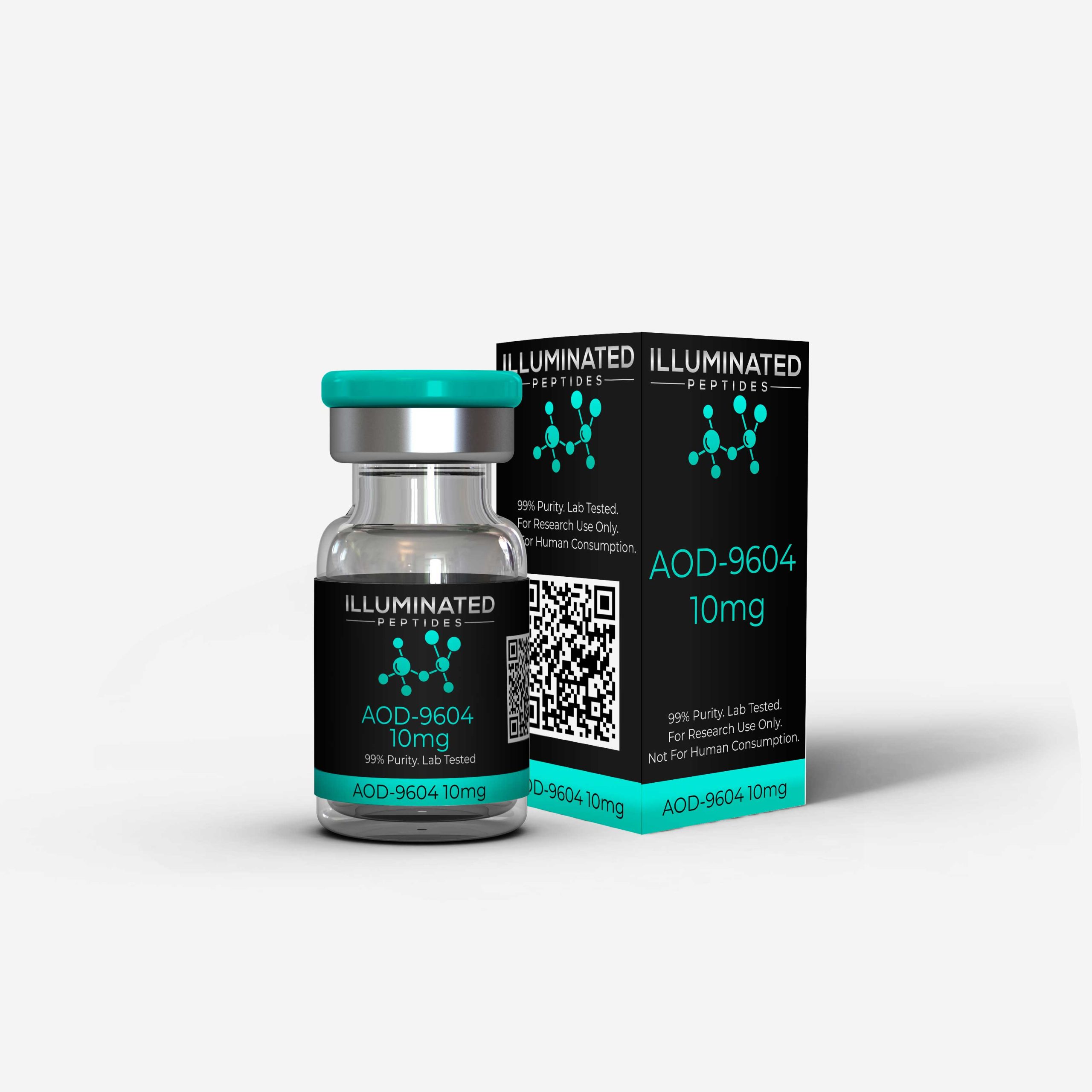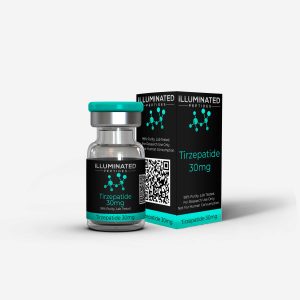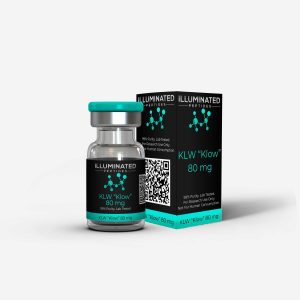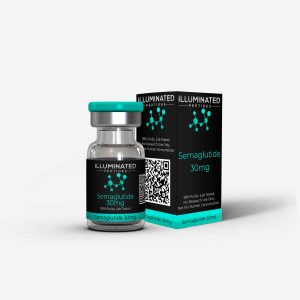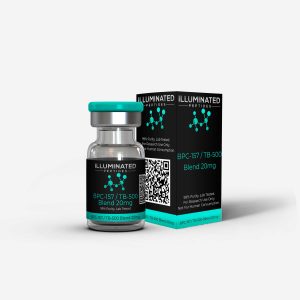Description
What is AOD-9604?
AOD9604 is a synthetic derivative of the human growth hormone (hGH) fragment 176–191, specifically modified with a stabilizing structure. It was originally developed for research into obesity due to its lipolytic (fat-reducing) activity. One of its distinguishing features is that its effects appear to be selective, with limited influence outside of fat metabolism. Research suggests that AOD9604 does not significantly impact IGF-1 concentrations or insulin regulation, making it less likely to interfere with glucose balance in experimental models.
Additionally, studies indicate that AOD9604 does not trigger the formation of antibodies, as its structure is closely related to that of native hGH, thereby reducing the likelihood of an immune response. These properties make AOD9604 a valuable tool for ongoing laboratory studies into metabolism, energy regulation, and peptide-based research.
AOD-9604 Structure
Sequence: Tyr-Leu-Arg-Ile-Val-Gln-Cys-Arg-Ser-Val-Glu-Gly-Ser-Cys-Gly-Phe Disulfide bridge Cys7-Cys15
Molecular Formula: C78H123N23O23S2
Molecular Weight: 1815.12 g/mol
PubChem CID: 16131447
CAS Number: 386264-39-7
AOD-9604 Research
Obesity
AOD9604 is a stabilized fragment of human growth hormone (hGH), derived from amino acid residues 176–191 with the addition of a di-sulfide bridge. Research in animal models has shown that this peptide fragment selectively targets adipose tissue processes, influencing both lipolysis (the breakdown of stored fat) and lipogenesis (the formation of new fat). Unlike full-length hGH, AOD9604 appears to operate without significantly impacting IGF-1 or insulin signaling, making it a focused tool for studying lipid metabolism.
Preclinical studies suggest that modulation of fat metabolism by AOD9604 can alter adipocyte activity and energy partitioning, providing insight into the molecular mechanisms underlying weight balance and caloric efficiency. Findings indicate that the peptide may reduce fat accumulation while enhancing fat utilization in animal systems, even in the absence of dietary changes. This selectivity has made AOD9604 an important subject of research into obesity biology and energy regulation.
Joint Pain and Function
Preclinical research in animal models has investigated the effects of AOD9604 on joint health, particularly in conditions associated with cartilage degeneration. Studies involving direct administration into affected joints have reported improvements in both structural cartilage features and overall joint function. These findings suggest that AOD9604 may influence biological pathways involved in cartilage maintenance and repair.
Additional work indicates that AOD9604 may exhibit greater effectiveness when studied alongside other agents, pointing toward possible synergistic mechanisms that remain under investigation. While the exact molecular interactions are not yet fully understood, this line of research highlights the potential of AOD9604 as a tool for exploring cartilage biology and joint function in laboratory settings.
Heart Disease
While reductions in body fat and weight are known to influence cardiovascular risk factors, experimental research suggests that AOD9604 may also impact cardiac health through mechanisms that extend beyond fat metabolism. Preclinical findings indicate that the peptide could influence metabolic pathways in ways that support cardiovascular function independently of weight reduction. This concept aligns with observations from other compounds that improve metabolic balance without directly altering body weight.
One area of interest is the secondary pathway associated with AOD9604 activity, which functions independently of beta-3-adrenergic receptor signaling. This pathway has been proposed as a possible contributor to improved metabolic outcomes, suggesting that the compound may act through multiple mechanisms that together affect energy regulation and cardiovascular parameters.
Studies in animal models have also noted that AOD9604 demonstrates favorable absorption and tolerability profiles, with good oral and subcutaneous bioavailability reported in mice. Importantly, dosing in preclinical species does not directly translate to human application, underscoring the need for controlled laboratory settings to further evaluate the compound’s properties.

